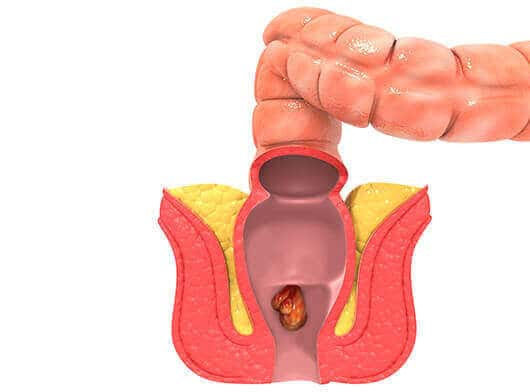There are many ways to treat anal cancer depending on the stage, location and type of cancer. The most common cancer, i.e. Squamous cell carcinoma of the anal canal, is treated with chemoradiation therapy. Surgery is generally reserved for cases who have not responded to chemoradiation therapy.
- Surgery
- Radiation therapy for anal cancer
- Medical Oncology
-
In most cases, surgery is not the first treatment used for anal cancer. Surgery is generally offered for patients who have failed after chemoradiation or when they are eligible for treatment with chemoradiation. For people who do need surgery, the type of operation depends on the type and location of the tumor.
- Local Resection: A local resection is an operation that removes only the tumor, plus a small amount of normal tissue around the tumor. It's most often used to treat cancers of the perianal area (also called the anal margin) if the tumor is small and has not spread to nearby tissues or lymph nodes.
- Abdominoperineal Resection (APR): APR is the removal of the anal canal, rectum and its adjoining lymph nodes. The anus (and the anal sphincter) is removed, so a new opening needs to be made for stool to leave the body. To do this, the end of the colon is attached to a small hole (called a stoma) made on the abdomen. A bag to collect stool sticks to the body over the opening. This is called a colostomy. In cases of those undergoing APR, the colostomy is permanent, and the stools pass through the newly constructed colostomy.
- Radiation therapy with concurrent chemotherapy is the treatment of choice for Anal canal cancers.
- External Beam Radiation Therapy (EBRT) - External Beam Radiation Therapy focuses radiation from outside the body onto cancer. This is the type of radiation therapy most often used to treat anal cancer or its spread to other organs.
-
Following techniques allow the doctors to give higher doses of radiation to cancer while reducing the radiation to nearby healthy tissues -
- Three-dimensional conformal radiation therapy (3D-CRT) uses special computers to precisely map the location of cancer. Radiation beams are then shaped and aimed at the tumor from several directions. This makes them less likely to damage normal tissues.
- Intensity-Modulated Radiation Therapy (IMRT) is a form of 3D therapy and the preferred type of EBRT for anal cancer. It uses a computer-driven machine that rotates around you as it delivers radiation. Along with shaping the beams and aiming them from several angles, the intensity (strength) of the beams can be adjusted. This helps limit the dose reaching normal tissues and can reduce some side effects.
- Stereotactic body radiation therapy (SBRT) is a type of radiation that might be used for recurrent or metastatic diseases.
- Brachytherapy (Internal Radiation) Brachytherapy is not commonly used to treat anal cancer. When it is used, it's usually given as a radiation boost along with external radiation.
-
Chemotherapy
- Chemotherapy uses drugs to destroy cancer cells. The indication for chemotherapy is based on the stage of cancer and risk factors.
- Chemotherapy may be used before surgery to shrink large tumors, which makes it easier to remove of the tumor.
- Few patients may require chemotherapy after surgery which helps to kill any residual cancer cells. It is also indicated in cases when the disease has spread to other parts of the body.
- Chemotherapy also may be used in cancers where the tumor is inoperable. Sometimes chemotherapy is combined with radiation therapy.
-
Targeted drug therapy
- The indication for targeted therapy is based on molecular changes in the cancer cell. This is usually combined with chemotherapy and may be an option in selected cases. In the case of recurrent disease, based on the molecular alterations noted in the tumor, specific targeted therapy is also an option. These are given in combination with chemotherapy.
-
Immunotherapy
- Immunotherapy is a drug treatment that uses the immune system to fight cancer. Immunotherapy may be an option in selected patients who have advanced disease and recurrent disease.



.png)
